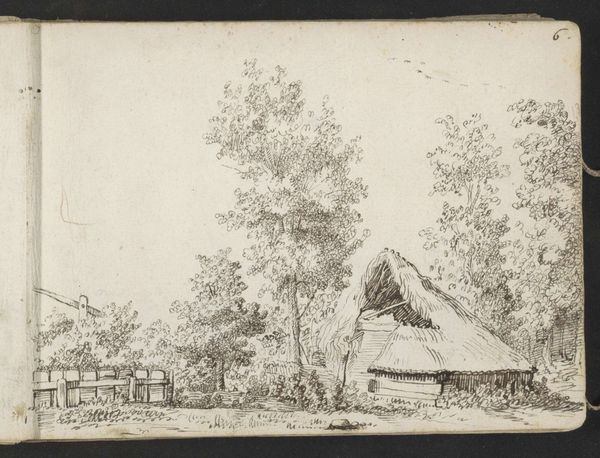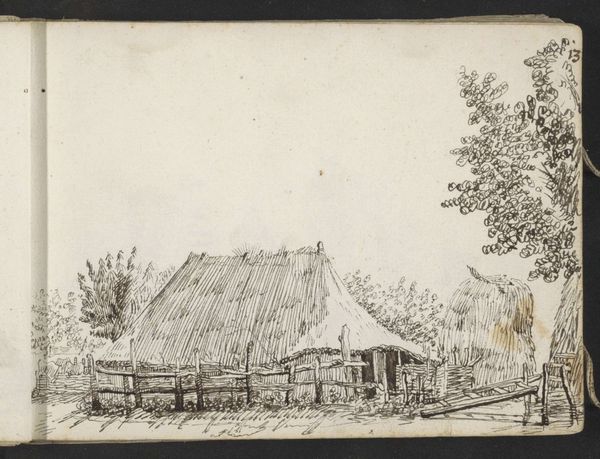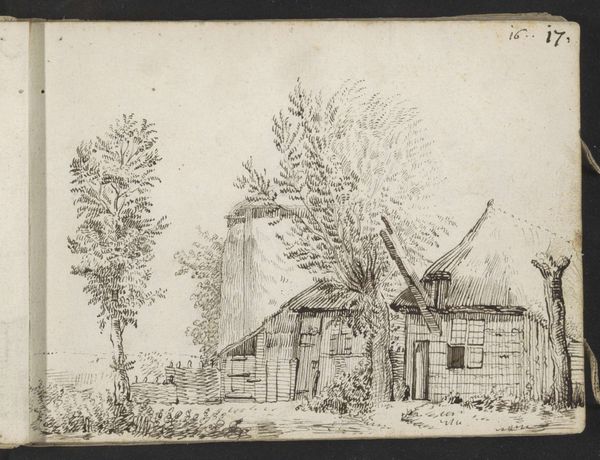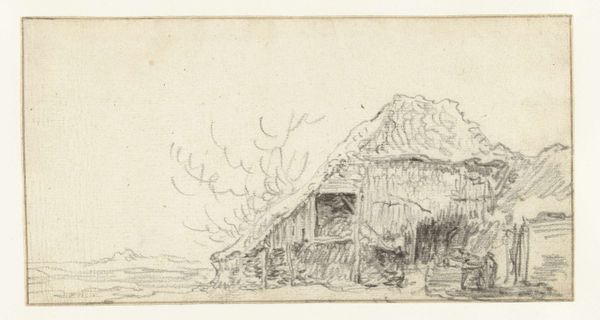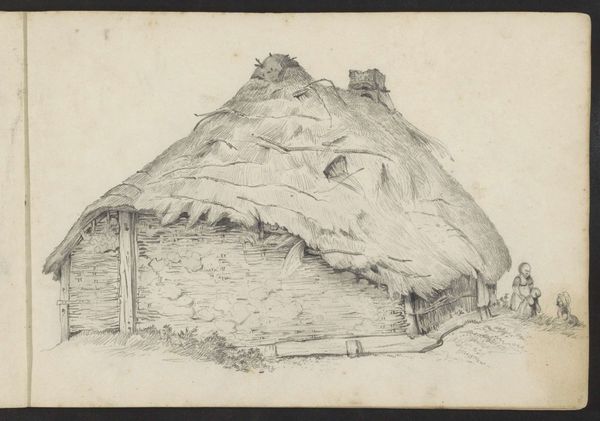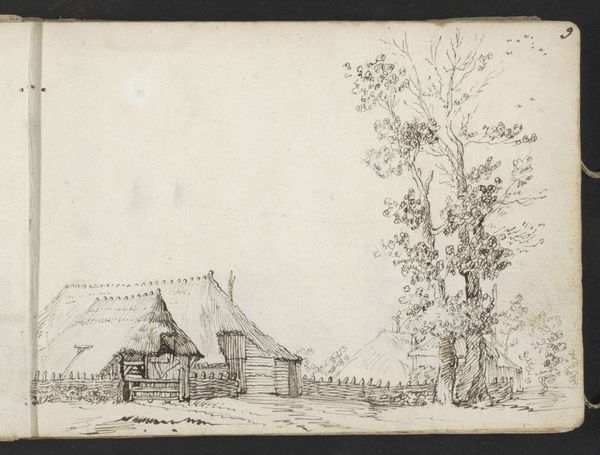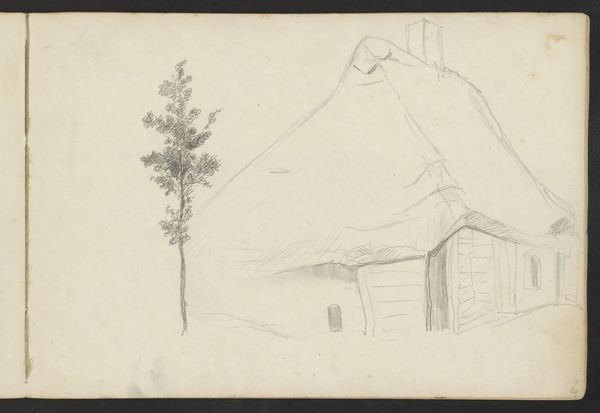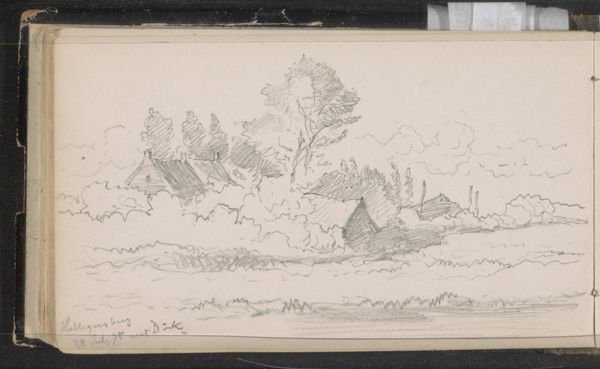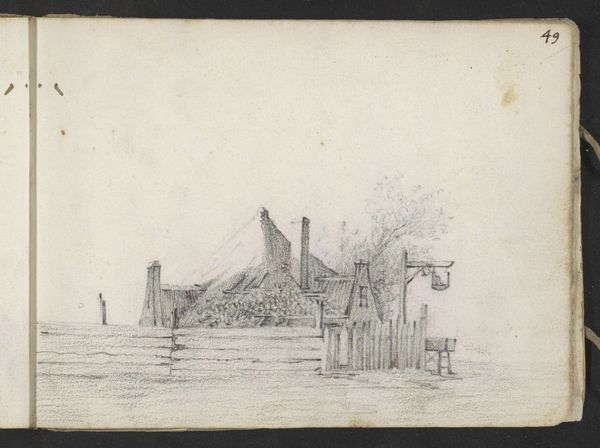
drawing, paper, ink
#
drawing
#
dutch-golden-age
#
pen sketch
#
landscape
#
paper
#
ink
#
realism
Copyright: Rijks Museum: Open Domain
Curator: Welcome to the Rijksmuseum. We're standing before "Vervallen boerenschuur buiten Zwolle," a drawing rendered in ink on paper by Gerard ter Borch II, dating to around 1631-1633. Editor: It has such an understated poignancy. It's just a humble farm, really a shack, but there is a sense of… fragility to it, rendered with such economy. Curator: Absolutely. Look at the details, the material evidence—the texture of the thatched roof meticulously conveyed by the ink strokes, the rickety fence constructed with roughly hewn logs. One can imagine the quality of light filtered through the grimy glass windows... Borch wasn't just interested in representing; he captured the lived materiality. How were those materials sourced and by whose hands was the hut built and maintained? Editor: Right. And think of the sociopolitical context! The Dutch Golden Age, a period of immense wealth but also stark inequality. A drawing like this forces us to consider the lives often omitted from history—the peasants who bore the burden of empire, people existing on the margins who provide food and labor, their conditions so poignantly captured here in its decay. Curator: The decaying structure also implies temporal considerations. It isn't just the finished product; it is about aging, exposure to environmental elements. We also see the labor required for this structure, from thatching the roof to stacking firewood... There's a direct connection to natural resources. Editor: The image resonates strongly with me; it challenges traditional, celebratory narratives. The Dutch Golden Age art, typically glorifies merchants, but Borch's humble shack provides the alternative angle and quiet resistance by directing our attention to the oft-forgotten farmers. We see art providing a voice to marginalized existences. Curator: Agreed. Borch invites contemplation on labor and its relationship to land. He really digs into the raw, lived reality of these agricultural inhabitants. The artist provides an opening for critical engagement with the labor processes often rendered invisible. Editor: I find that consideration fascinating as well, especially juxtaposed to traditional landscape painting—nature tamed and possessed. Here, it is about revealing vulnerabilities to make our understanding more humane. Curator: Well, I think Borch provides a profound reflection on material and social reality through a focus on a dilapidated building. Editor: And for me, the art serves as a lens through which we may engage issues of exploitation and class. Both relevant today!
Comments
No comments
Be the first to comment and join the conversation on the ultimate creative platform.

